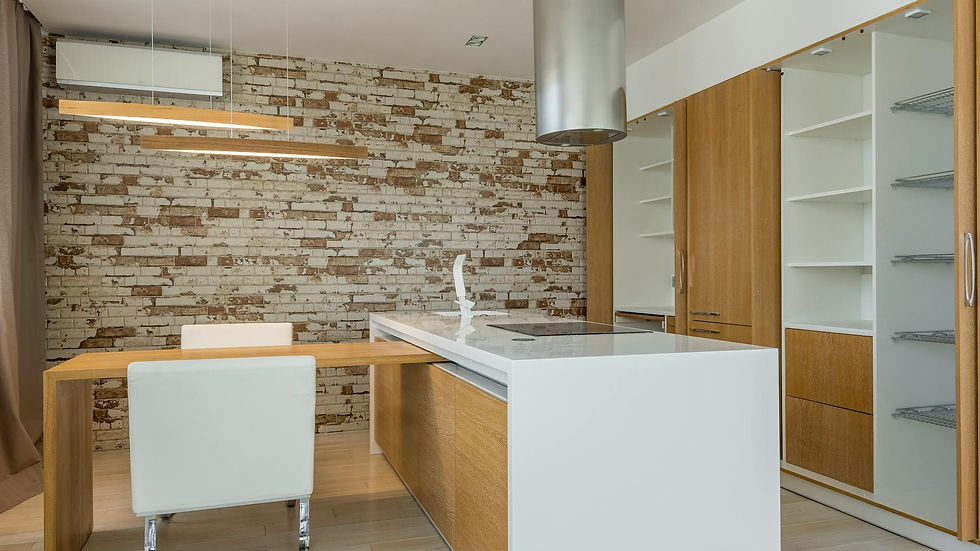DIY Basement Solutions: The Complete Guide
- Riley Thorne

- 1 day ago
- 4 min read

Ever walk down to your basement and feel a sense of dread? Is it damp, musty, or just plain unfinished? You're not alone. Many homeowners face basement challenges, but the good news is that many of these problems can be tackled with effective, affordable DIY solutions. This complete guide provides you with practical steps to transform your basement into a functional and enjoyable space without breaking the bank. We’ll cover everything from moisture control and basic repairs to finishing touches, empowering you to take control of your basement's potential.
Identifying and Addressing Common Basement Problems
Basements, being below ground level, are susceptible to various issues. Recognizing these issues is the first step toward implementing the right DIY solutions for basement problems. Let's delve into some of the most common challenges.
Moisture Intrusion
Water is the number one enemy of a healthy basement. It can lead to mold growth, structural damage, and an overall unpleasant environment. According to the American Society of Home Inspectors, over 60% of homes have some form of basement dampness.
Causes: Cracks in the foundation, poor drainage around the house, leaky pipes, and condensation.
DIY Solutions:
Improving Drainage: Ensure gutters are clean and downspouts direct water away from the foundation. Consider extending downspouts if needed.
Sealing Cracks: Use hydraulic cement or epoxy crack filler to seal any visible cracks in the foundation walls. Follow manufacturer's instructions carefully.
Dehumidifiers: A dehumidifier can significantly reduce moisture levels in the air. Choose a model appropriate for the size of your basement.
Vapor Barrier: Install a plastic vapor barrier on the walls to prevent moisture from penetrating the interior space. Overlap seams and tape securely.
Mold and Mildew
Mold and mildew thrive in damp environments. Not only are they unsightly, but they can also pose health risks, especially for individuals with allergies or respiratory problems.
Causes: High humidity, water leaks, and poor ventilation.
DIY Solutions:
Cleaning Affected Areas: Use a mold-killing cleaner specifically designed for basements. Wear protective gear, including gloves, a mask, and eye protection.
Improving Ventilation: Install exhaust fans to circulate air and reduce humidity. Consider opening windows when the weather permits.
Addressing the Source: Identify and fix the source of moisture to prevent future mold growth.
Foundation Issues
Cracks in the foundation, bowing walls, and settling are serious problems that can compromise the structural integrity of your home. While some foundation issues require professional attention, minor cracks can be addressed with DIY methods.
Causes: Soil movement, hydrostatic pressure, and poor construction.
DIY Solutions (for minor issues):
Crack Repair: As mentioned earlier, use hydraulic cement or epoxy crack filler to seal small cracks.
Monitoring: Regularly inspect your foundation for any new or worsening cracks. If you notice significant changes, consult a structural engineer.
Essential DIY Basement Repairs
Beyond addressing moisture and foundation issues, several other repairs can significantly improve your basement.
Repairing Walls and Floors
Damaged walls and floors can make your basement feel unfinished and uninviting. Addressing these issues can dramatically improve the space's appearance and functionality.
Wall Repair: Patch holes with drywall compound, sand smooth, and prime before painting.
Floor Repair: Level uneven floors with self-leveling concrete before installing flooring. Repair cracks in concrete floors with concrete patch.
Improving Insulation
Proper insulation is crucial for maintaining a comfortable temperature in your basement and reducing energy costs.
Insulating Walls: Install rigid foam insulation boards on the walls. Seal all seams with foil tape.
Insulating Ceilings: Consider adding insulation to the ceiling to prevent heat loss to the floor above.
Finishing Your Basement on a Budget
Transforming your basement into a finished living space can significantly increase your home's value and provide valuable extra square footage. Fortunately, there are plenty of DIY solutions for basement problems when finishing.
Planning and Design
Before you start any construction, it's essential to have a clear plan. Consider the intended use of the space and create a detailed layout.
Consider Building Codes: Research local building codes and obtain any necessary permits.
Create a Floor Plan: Design a layout that maximizes space and functionality.
Choose Materials Wisely: Opt for affordable and durable materials suitable for basements.
DIY Flooring Options
Flooring can have a major impact on the overall look and feel of your basement. Several affordable DIY options are available.
Interlocking Floor Tiles: Easy to install and resistant to moisture.
Laminate Flooring: Affordable and durable, but choose a moisture-resistant variety.
Painting Concrete: A budget-friendly option, but requires proper preparation.
Lighting and Electrical
Proper lighting is essential for creating a welcoming basement environment.
Adding Outlets: If you're comfortable with electrical work, you can add outlets to your basement. Always turn off the power at the breaker box before working with electricity. Otherwise, hire a qualified electrician.
Installing Lighting Fixtures: Choose energy-efficient LED lighting fixtures to brighten up the space. Recessed lighting, track lighting, or even string lights can transform the ambiance.
Safety Considerations
When tackling DIY basement projects, it's crucial to prioritize safety.
Wear Protective Gear: Always wear appropriate safety gear, including gloves, eye protection, and a mask.
Work in a Well-Ventilated Area: Ensure adequate ventilation when working with chemicals or power tools.
Follow Instructions Carefully: Always follow the manufacturer's instructions for any products you use.
Transforming your basement doesn't have to be an overwhelming or expensive undertaking. By identifying and addressing common problems with these DIY solutions for basement problems, implementing essential repairs, and carefully planning your finishing touches, you can create a functional and enjoyable space that enhances your home's value and your family's quality of life. Remember to prioritize safety and consult with professionals when necessary. Take the plunge and unlock the full potential of your basement today! Start with addressing the moisture issues, then move onto repairs and aesthetics. Your dream basement awaits!



Comments